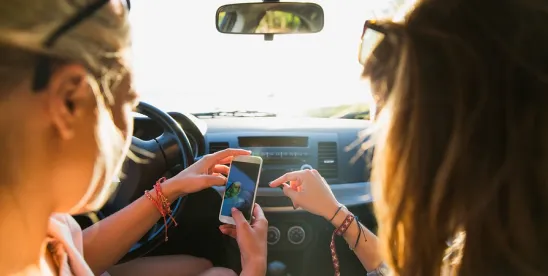We've all had that one "oh no" moment when we were distracted while driving or witnessed another driver who was completely unaware of what was happening around them on the roadway because they were distracted by something. Distracted driving claimed 3,477 lives and injured 391,000 people in 2015. The National Highway Traffic Safety Administration (NHTSA) estimates that there are at least 660,000 drivers during daylight hours who are using electronic devices every day on our roadways.
Distracted driving includes any activity that distracts the driver's attention away from the road while driving. The distractions can be visual (eyes off the road), manual (hands off the wheel) or cognitive (mind off driving). The distracted activity can include using cell phones, texting, looking at apps and videos, talking to passengers, eating, grooming, reading and changing radio stations while driving.
Taking your eyes off the road in front of you for even just 5 seconds at 55 miles per hour is like driving the length of a football field while blindfolded. During that time, the driver will never see the traffic signal ahead turn red, the child on the bike or the vehicle braking ahead of them. Safe driving takes a person's full attention all of the time to avoid the increased risk of crashes causing injuries and death.
NHTSA is partnering with state and local police to bring the magnitude of the issue of distracted driving to the public attention. Many states now have laws against distracted driving activities. For example, California, Massachusetts and New York all have adopted complete bans on holding phones or hand-held devices while driving. Michigan prohibits texting while driving with fines of $100 for the first offense, and $200 for each subsequent offense.
We all need to be involved to put an end to distracted driving. Studies show that in 2016, an historic 90 percent of the nation's drivers and front seat passengers were wearing seat belts during daylight hours. The increased seat belt usage is attributed to public education, law enforcement efforts, and driver safety practice and habits. We can do the same for distracted driving.
Always focus on driving the vehicle. Be familiar with the vehicle you are driving and preset the radio, MP3 device, and climate control before beginning the trip. Secure and silence cell phones and other devices that draw your attention away from the roadway. Pull off the roadway and out of traffic areas before dealing with an issue that may distract your attention from the road, including texts, music, navigation systems and children.
Teens provide the best remedy for distracted driving when they speak up to their peers to curb the adverse activity. When teaching young drivers about the responsibilities of driving, including eliminating distractions, parents should always lead by example and never drive with distractions.
Both the NHTSA and Michigan State Police have additional information available on their websites.



 />i
/>i

